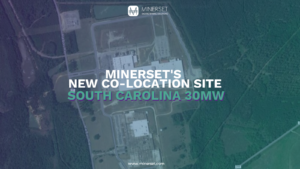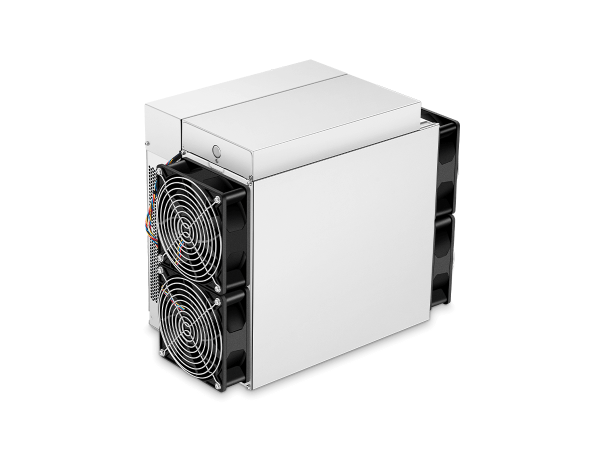When looking to expand your Bitcoin mining farm, there are a number of challenges to navigate. Firstly, there is the issue of finding additional capital to cover the cost of the expansion. Expanding a mining farm requires substantial capital investment as the cost of purchasing additional mining hardware, cooling systems and electricity can be significant. As well as securing additional capital, securing additional power is another challenge to overcome when trying to scale your mining farm. Working with your utility company to secure additional power may require additional capital expenditure on substation breakers etc. This could mean additional power deposits might be required.
Another challenge to overcome when scaling your Bitcoin mining farm is securing engineers to make the additional infrastructure changes that you require. This includes installing more cabling for new transformers and hooking up additional pods and miners. Securing additional pods and miners at a good price goes hand in hand with this, as this is key to scaling your mining farm. Minerset can help with this, contact for quotes on pods, miners and spare parts.
When scaling your Bitcoin mining farm, it is important to remember that staff will be distracted from their daily operational tasks, as they get involved with deploying the new miners, installing firmware and other tasks required for the expansion to be able to take place.
Strategic Solutions for Sustainable Growth
One of the key strategies for sustainable growth in Bitcoin mining farms is to transition to renewable energy sources. By harnessing wind, solar or hydroelectric power, mining farms can significantly reduce their carbon footprint and reliance on non-renewable energy sources. Additionally, implementing energy efficient technologies and practices, such as liquid cooling systems and optimising mining algorithms, can further reduce energy consumption and operational costs. By investing in sustainable energy solutions, mining farms can not only contribute to a cleaner environment, but also ensure the long-term profitability of their operations.
Another important consideration for sustainable growth in Bitcoin mining farms is the design and layout of the facilities. By optimising the placement of mining equipment and cooling systems, farms can reduce energy consumption and improve efficiency. For example, placing mining rigs in a way that maximises airflow and reduces heat build up can help prevent overheating and increase the lifespan of the equipment.
Also, implementing advanced cooling systems, such as liquid immersion cooling or direct to chip cooling, can also help reduce the energy usage and improve the overall performance of the mining operation. These systems can help dissipate heat more effectively, allowing the equipment to run more efficiently and consume less power.
Another strategy for sustainable growth is to invest in newer, more energy efficient mining equipment, farms can improve their performance and reduce their energy consumption. Newer models of mining rigs are designed to be more energy efficient and produce less heat, making them a more sustainable option for mining operations. Additionally, these newer models often come with advanced features such as automated power management and remote monitoring, further enhancing efficiency and sustainability.
Energy Efficiency: Balancing Cost and Environmental Impact
One of the main challenges in achieving energy efficiency in Bitcoin mining farms is the high cost associated with it. Mining equipment, such as new mining rigs and cooling systems, can be expensive to purchase and maintain. Additionally, the electricity costs can be enormous, as the mining process requires a constant supply of energy to solve complex mathematical problems and validate transactions on the blockchain. This can pose a significant financial burden on mining farms, as they must constantly balance the cost of energy with the potential profits from mining.
On the other hand, the environmental impact of Bitcoin mining cannot be ignored. The huge amount of energy consumption of mining farms has led to concerns about carbon emissions and the overall sustainability of the industry, as studies have estimated that Bitcoin mining consumes more energy than some countries. This has raised questions about the long-term viability of Bitcoin and other cryptocurrencies if sustainable practices are not implemented.
To address these challenges, the industry has begun to explore and implement various strategies for energy efficiency in Bitcoin mining. One approach is the use of renewable energy sources, such as solar or wind power, to power mining operations. This not only reduces the carbon footprint of mining farms but also helps to mitigate the high electricity costs associated with traditional energy sources. Another strategy is the optimization of mining equipment and processes to increase efficiency and reduce energy consumption. This includes the use of more efficient computer chips and cooling systems, as well as implementing better management and monitoring systems.
In addition to these strategies, there have been efforts to develop more environmentally friendly cryptocurrencies that require less energy to mine. These alternative currencies use different algorithms that do not rely on energy intensive mining processes, making them a greener option for investors and miners.
However, while these efforts are a step in the right direction, they also face challenges. For example, the use of renewable energy sources may not always be feasible or cost effective, especially for smaller mining operations. Additionally, the development and adoption of alternative cryptocurrencies may be slow, as Bitcoin remains the dominant and most widely accepted digital currency.
Technological Upgrades: Staying ahead in the Competitive Landscape
By upgrading their equipment and processes, mining farms can significantly improve their operations and increase their profitability. One of the key benefits of technological upgrades in a bitcoin mining farm is increased hashing power. By upgrading to the latest and most powerful mining hardware, farms can significantly increase the speed at which they are able to mine Bitcoin. This, in turn, allows them to mine more coins in a shorter amount of time, increasing their overall profitability. Additionally, upgrading to more efficient hardware can also reduce energy consumption, further increasing the farm’s profitability.
However, there are also challenges associated with scaling a bitcoin mining farm through technological upgrades. One of the main challenges is the cost of upgrading equipment. Investing in new hardware can be expensive, and many mining farms may struggle to afford the latest technology. Additionally, the rapid pace of technological advancement means that new hardware becomes outdated quickly, making it difficult for farms to stay competitive.
Another challenge is the technical expertise required to implement and maintain technological upgrades. Mining farms must have skilled technicians who can install, configure, and troubleshoot new hardware, which can be challenging for some operations. Additionally, upgrading equipment can be time-consuming, requiring farms to temporarily shut down their operations while upgrades are being implemented.
Regulatory Hurdles: Navigating Legal Considerations
One of the key legal considerations when operating a Bitcoin mining farm is the regulatory environment in which the operation is situated. Different jurisdictions have varying laws and regulations regarding cryptocurrencies and mining activities. It is important to ensure that the mining farm complies with all relevant laws and regulations to avoid any potential legal issues or penalties. This may involve obtaining the necessary permits and licenses, as well as following any specific requirements set out by regulatory authorities.
Another important legal consideration when scaling a Bitcoin mining farm is the issue of tax. Cryptocurrency mining is typically classified as a business activity, and miners may be required to pay taxes on the profits generated from their operations. It is crucial to understand the tax implications of mining cryptocurrencies in the jurisdiction in which the farm is located, as failure to do so could result in significant financial consequences.
Additionally, environmental regulations and sustainability concerns should be taken into account when scaling a Bitcoin mining farm. The energy intensive nature of mining operations can have a significant impact on the environment, and it is important to consider the environmental implications of scaling up the farm.
Financial Planning: Investment strategies for Scaling
Firstly, it is essential to analyse the market conditions and trends before making any investment decisions. The price of bitcoin can be highly volatile, and mining profitability can fluctuate based on factors such as the cost of electricity and the difficulty level of mining. Conducting research and staying informed about market developments will help you make decisions about when and how to scale your mining farm.
Another important investment strategy is to carefully consider the hardware you will use for mining. As the mining difficulty increases, older mining equipment may become less profitable and less efficient. Investing in newer, more efficient mining hardware can help increase the mining capacity of your farm and improve profitability. However, it is also important to consider the cost of upgrading hardware and weigh this against potential returns.
Consider the location of your mining farm when scaling your operation. Factors such as the cost of electricity, access to cooling solutions, and local regulations can all impact the profitability of your mining farm. Choosing a location with low electricity costs and favourable mining conditions can help you maximize your returns and reduce operational expenses.
Community and Network: Leveraging Collaborative Opportunities
One of the main benefits of collaborative opportunities in scaling Bitcoin mining farms is the ability to pool resources and increase efficiency. By combining multiple mining rigs into a single network, miners can work together to solve algorithms faster and increase their chances of earning rewards. This collaboration also allows for the sharing of resources such as electricity and cooling systems, leading to cost savings for all participants involved.
In addition to increasing efficiency and computing power, collaborative opportunities in scaling Bitcoin mining farms also provide a platform for knowledge sharing and innovation. By working together, miners can share insights, techniques, and best practices that can help improve their mining operations and increase their overall profitability.






